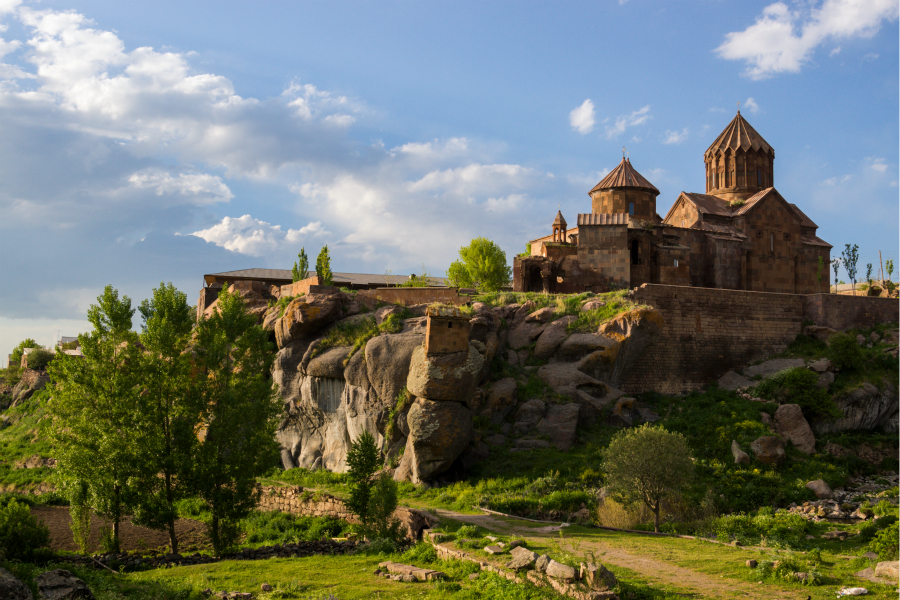
Harichavank holds a prominent place among the most renowned monastic centers in Armenia, celebrated for its prestigious school and scriptorium. Archaeological discoveries from 1966 confirmed its existence as far back as the 2nd century BC, establishing it as one of Armenia’s notable fortress towns. Over the span of 800 years, the monastery underwent multiple reconstructions to address damages, and several small annexes and chapels were added at different times. The most significant expansions occurred in the latter half of the 19th century when Harich became the summer residence of the Catholikos of Echmiadzin in 1850.
The first church, dedicated to St. Gregory, showcased a cross-winged dome design and originated in the 7th century. Its apse wings demonstrated a combination of semicircular inside and pentahedral outside, akin to the structures found in Mastara and Artik. The central part, featuring a square plan, boasted an original pendentive design, supporting an impressive 12-hedral cupola that bestowed a majestic ambiance to the interior.
The primary church, Astvatsatsin, was constructed in 1201 and exemplified the prevailing architectural style during the 12th and 13th centuries. Its exterior displayed a rectangular appearance, while the interior featured a cross-winged dome design, complemented by two-storey annexes in all four corners.
Harichavank’s rich historical legacy, coupled with its captivating architectural splendor, continues to attract visitors, offering a glimpse into Armenia’s ancient past and cultural heritage.
